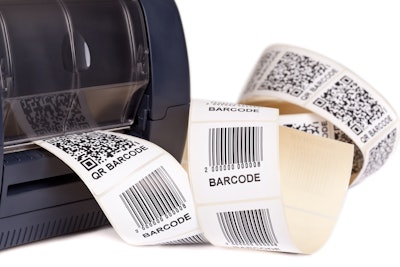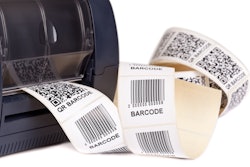
Dangerous goods (DG) shipping is a constant, complex balancing act. You’re juggling risk, cost, speed, disruptions, customer and carrier requirements and regulatory compliance. Relying on manual processes anywhere within that process burns precious time and opens the door to costly mistakes.
But the good news is that DG shipping technology has come a long way in recent years. Modern solutions can help streamline classification, optimize shipments, integrate with existing systems to maximize the value of your product data, and validate shipments against up-to-date regulatory rules in real time. These tools give companies the confidence to make smarter decisions, such as leveraging exemptions when appropriate, striking the ideal balance between safety, speed, and cost.
The result? Safer shipments, faster turnaround, and thousands of dollars saved annually – for companies that are doing it right.
The real risk isn’t just fines. It’s safety and supply chain disruption.
Unfortunately, too many companies still focus on simply avoiding fines and squeaking by the next audit, while losing sight of realizing sustainable safety goals and meeting business needs. The logic: if we’re not getting fined, we must be doing fine. But that’s a dangerous (and often costly) assumption.
When considering risk in DG shipping, under-declaring shipments likely comes to mind immediately.
Under-declaring good typically means not properly identifying or classifying regulated goods being shipped, exposing companies to risks like supply chain disruptions or safety incidents like fires and thermal runaway, and, as a result, take on serious brand damage and liability. But what’s even harder to predict and calculate is the negative impact non-compliance can have on customer loyalty and the value of your brand.
Meanwhile, over-declaring shipments isn’t thought of as a business risk nearly as often as it should. Over-declaring shipments to help ensure compliance can be the safer route, but at scale, it comes with a high price. You’re stuck with extra labeling, more expensive UN packaging, and labor and handling fees as a result. Common in industries such as aerospace, defense, and chemical manufacturing as a precaution, the approach wastes time and money, which can really add up.
The wasted time and money of either under-or-over-declaring shipments can quietly accumulate into a major operational drag. What’s worse, many of these issues are symptoms of a deeper problem: outdated tools and fragmented processes that simply can’t keep up with today’s demands.
Here’s what the most forward-thinking companies are doing and where others are falling behind.
1. Get rid of outdated technology tools. Despite billions in supply chain innovation, many companies still manage DG shipping with spreadsheets, printed binders and “that one guy in the warehouse who knows how it works.” That kind of tribal knowledge can’t scale and provides a false sense of security — it’s a ticking time bomb as experienced employees retire or move on, with an incident waiting to happen. And some existing hazmat shipping tools don’t enable more choice for partially regulated goods, introducing unnecessary costs that lead some companies to cut corners, ultimately increasing risk, not reducing it.
DG shipping technology should be the foundation for codified, consistent processes that ensure every shipment — no matter who’s handling it — gets out the door safely, compliantly, accurately and on time. Without it, cracks appear fast. And the consequences aren’t just regulatory, they’re operational.
2. Use digital tools to help capture — and scale — critical knowledge. With skilled labor shortages and DG professionals retiring across the industry, one of the biggest challenges isn’t just training new people, it’s capturing the expertise that’s walking out the door.
Tech-enabled workflows and centralized platforms act as knowledge preservation tools, ensuring that what one subject matter expert knows in Germany can inform safe shipping practices in Arizona. This is especially valuable for global companies managing complex, multi-site supply chains.
3. Use AI to augment decision-making, not run DG shipping solo. While AI is making waves in areas like route optimization and predictive inventory, it’s not going to completely replace your entire shipping process or DG expertise. Nor should it. The risk is too high, and the variables are too complex.
What we’re seeing instead is AI-augmented decision-making where tools help humans get the information they need to make better, faster, and safer choices. Think automated suggestions for exemptions, real-time, shipment-specific rule validation, or flagging errors before they hit the warehouse floor. The goal isn’t to replace humans — it’s to spread expertise, catch mistakes early, and scale good decisions across the entire supply chain.
Bottom line: Dangerous goods shipping needs a digital re-set
Consider this: If you rely on manual processes, and even 10% of shipments contain DG or hazardous materials, you’ll need to divert one in 10 shipments in your standard transportation management system (TMS), warehouse management system (WMS) or enterprise resource planning (ERP) workflow to ensure compliance. Even if that only adds ten minutes per shipment, that can put you at a significant competitive disadvantage.
Manually entering information also increases opportunities for mistakes and compliance errors can cause delays, stopped shipments, costly penalties and other disruptions.
But simply having supply chain software in place doesn’t guarantee success. Many platforms lack the functionality required to specifically address DG shipping processes. And those that do have some DG shipping capabilities may not be able to identify where you’re over-declaring or under-declaring shipments and provide guidance on how to properly declare goods while maintaining the level of compliance and safety your organization demands.
Modern DG platforms are designed to work behind the scenes, making it just as easy to ship regulated goods as non-regulated ones. The result? Smoother operations, faster fulfillment, and less stress for everyone involved.
These integrated solutions pull from current hazardous materials databases, apply rigorous validation checks, and generate compliant shipping documents automatically. Centralizing this functionality within your core systems creates a cohesive, reliable data environment that supports accuracy and efficiency at scale. Companies can also apply custom business rules and logic to match product-specific requirements and internal policies, allowing for greater control and flexibility across workflows without sacrificing safety.
You’re closer to DG automation than you think
By embedding DG functionality directly into your established workflows, you can streamline hazmat shipping processes, reduce manual errors, and ensure consistent compliance across teams and locations.
This benefits companies of any size as well as software and third-party logistics (3PL) providers looking to further enhance their platforms to deliver greater value to their DG-shopping customers to set themselves apart from the competition.
The good news is that DG shipping automation is easier than you might think. Your organization likely already has the product and shipping information and the workforce it needs. Now it just needs the technology to help them work together, safer, and faster.

![Pros To Know 2026 [color]](https://img.sdcexec.com/mindful/acbm/workspaces/default/uploads/2025/08/prostoknow-2026-color.mduFvhpgMk.png?auto=format%2Ccompress&bg=fff&fill-color=fff&fit=fill&h=100&q=70&w=100)







![Pros To Know 2026 [color]](https://img.sdcexec.com/mindful/acbm/workspaces/default/uploads/2025/08/prostoknow-2026-color.mduFvhpgMk.png?ar=16%3A9&auto=format%2Ccompress&bg=fff&fill-color=fff&fit=fill&h=135&q=70&w=240)









